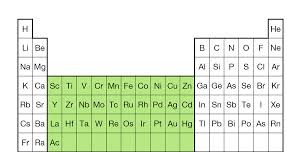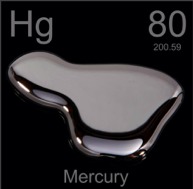Sign up for FlowVella
Sign up with FacebookAlready have an account? Sign in now
By registering you are agreeing to our
Terms of Service
Loading Flow

Transition Elements
The Transition Elements are Scandium, Titanium, Vanadium, Chromium, Manganese, Iron, Cobalt, Nickel, Copper, Zinc, Yttrium, Zirconium, Niobium, Molybdenum, Technetium, Ruthenium, Rhodium, Palladium, Silver, Cadmium, Hafnium, Tantalum, Tungsten, Rhenium, Osmium, Iridium, Platinum, Gold, Mercury, Rutherfordium, Dubnium, Seaborgium, Bohrium, Hassium, Meitnerium, Ununnilium, Unununium, and Ununbium.
They do have luster.
They are malleable and ductile.
They are great conductors of heat and electricity.
They are not very reactive.
The Transition Metals group numbers are 3 - 12.
Iron is used in making machine tools, automobiles, hulls of large ships, machine parts and in building supports.
Nickel is used in batteries, "The Nickel", hydro generating vegetable oils, and it turns glass green when applied.
Copper is used to make coins, gun metals, wiring, motors, an agricultural poison, an algicide in water purification, and in chemical tests for sugar detection.
The uses of Gold are jewelry, coins, currency in many different countries, used to help arthritis, and glue, paint, and resin.
The uses of Zinc are to coat other metals to protect them from rust, to make casts for automobiles, paint, rubber, and plastics.
Cadmium is a poison, it causes birth defects and cancer, in batteries, to protect from rust, and it absorbs neutrons.
Mercury is a liquid at room temperature and it is posouinous.

Location on Periodic Table

Mercury